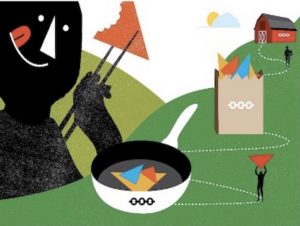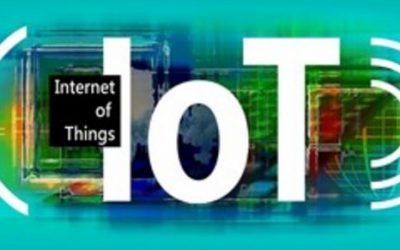Introduction
The hype surrounding the Internet of Things (IoT) is starting to die down. What we are seeing in its place is the emergence of new technologies using the IoT that are truly useful and groundbreaking. This is happening across a range of sectors, from healthcare to construction to agriculture. The companies involved in this list are the true pioneers of the IoT.
 Until recently, much of the hype around the Internet of Things (IoT) has been in terms of fridges, ovens and other household appliances. Yet this narrow view of IoT misses much of the potential – and with between 20 and 30 billion connected devices predicted by 2020, that’s a lot of potential.
Until recently, much of the hype around the Internet of Things (IoT) has been in terms of fridges, ovens and other household appliances. Yet this narrow view of IoT misses much of the potential – and with between 20 and 30 billion connected devices predicted by 2020, that’s a lot of potential.
With annual funding doubled over the past six years, there are some surprising ways in which the IoT will be changing industries and consumer habits around the world.
In an article on the subject, CBInsights discusses 11 ways this information can change our lives:
1) Ingestibles
The health industry is starting to popularize ingestible cameras and internet-connected sensors. One example is a pill-sized digestible sensor that can monitor whether patients are taking medicines as prescribed.
2) Hearables
A portmanteau of the wearables and headphones that are now so common. These are in-ear devices that can be used for communication, fitness, tracking and biometric data.
3) Computer vision
Advances in computer vision and camera-based navigation mean that there is no longer such a need to focus entirely on GPS for positioning. Drones are now capable of using computer vision algorithms to automatically avoid obstacles.
4) Moodables
This is still very much in development, but some companies are experimenting with headwear that can transmit low-energy currents into the brain in order to elevate moods.
5) Submersibles
Drone technology can even help with ocean exploration. Low-cost submersibles mean that low-cost exploration of the oceans – 95% of which are unexplored – is now possible.
6) Body scanning
Body scanning has for a long time been a costly process involving advanced equipment – and lots of it. However, now this can be done in the home, with the information helping consumers to find the right fit and retailers to better define the ‘average’ human.
7) Smart buildings
IoT will continue to embed chips into our built environment. One example can be found in glazing. The glass is powered by an algorithm that can respond to cloud cover, sun angle, temperature and other details to appropriately and actively tint the glass to help with solar gain.
8) Healthcare charting
Healthcare still relies heavily on paperwork to chart a patient’s history. This can account for up to a third of a practitioner’s time by some estimates. Smart glass technology can help to record and enter patients’ data hands-free – saving a lot more time.
9) Crop dusting
Even in agriculture, IoT has a role. Drone technology plays a strong part in crop dusting and drones can take advantage of information, from soil moisture to contours, to ensure an even and efficient spray.
10) Food safety
Allergen monitors can replace what previously required full organic chemistry labs to quickly test food for anything that might harm the consumer.
11) Mileage-based car insurance
Small, wireless devices that are plugged into a car can monitor distance travelled to get an effective and more accurate car insurance deal that’s based on the amount and how you actually drive.
Summary
· By 2020 as many as 30 billion devices will be connect by the IoT
· New technologies coming on stream today are giving us a better understanding of how this technology is developing
· Practical devices are being created
· The positive impact is being felt in industries from healthcare to agriculture – and many more
Big Data and related technologies – from data warehousing to analytics and business intelligence (BI) – are transforming the business world. Big Data is not simply big: Gartner defines it as “high-volume, high-velocity and high-variety information assets.” Managing these assets to generate the fourth “V” – value – is a challenge. Many excellent solutions are on the market, but they must be matched to specific needs. At GRT Corporation our focus is on providing value to the business customer.
What You Can Expect In 2017 For IOT
When you look at expert predictions for what will happen in the IoT space in 2017, it is clear technologies and...


